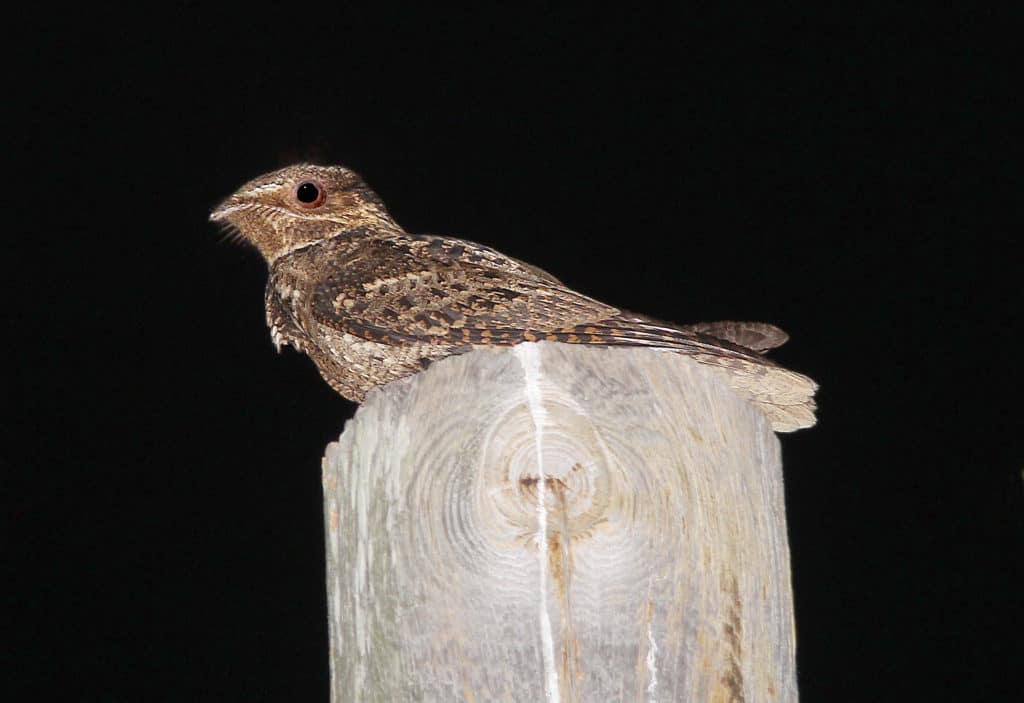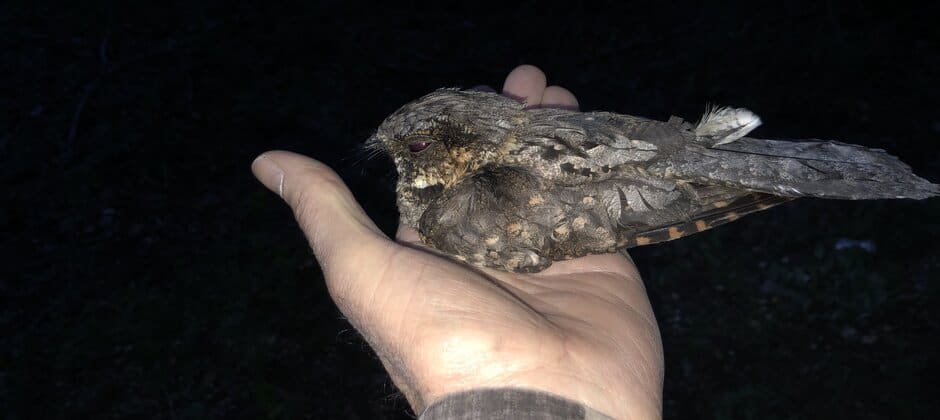Share this article
JWM: Forest treatments favors nightjar abundance
In the Missouri Ozarks, you can hear Chuck-will’s-widows and eastern whip-poor-wills more often than you see them—especially on a full moon.
These nightjar species are mostly active at night or around dawn and dusk, when they set out to hunt insects. Starting in May and throughout the summer, the males of these two species let out their characteristic breeding calls, a galloping staccato that announces their presence to females and other males in the vicinity. The name of their family, the Caprimulgidae, translates to “goat sucker” due to ancient superstitions that these night birds could steal milk from goats. Both species are a conservation concern because of long-term declines.
Frank Thompson, a research wildlife scientist with the U.S. Forest Service, and his colleagues Melissa Roach and Tom Bonnot from the University of Missouri, wondered how years of pine woodland restoration in the Ozarks region of southwestern Missouri—including restoration of natural pine woodlands in the Mark Twain National Forest—affected the birds.
Other research conducted in New England suggested that eastern whip-poor-wills do better in areas where forest management created more open forest. Thompson, a TWS member, and his colleagues wondered if this was true for nightjars in the Ozarks.
Thompson led a study published recently in the Journal of Wildlife Management, in which he and his colleagues surveyed the birds from April through July in 2014 and 2015. The researchers stayed out from 30 minutes after sunset until 30 minutes before sunrise during the week preceding and following each full moon during these months.
“These birds are most active where there’s a full moon at night,” Thompson said.
The team counted the number of calling birds and characterized the surrounding land, recording factors like canopy cover and predominant tree type, at 385 points. They also determined which areas had been treated with prescribed fires or had been thinned to reduce overstory density. They then built models that related the abundance of Chuck-will’s-widows (Antrostomus carolinensis) and eastern whip-poor-wills (Antrostomus vociferus) to these habitat and management factors.
“For the most part, woodland management benefited these birds,” Thompson said.

Chuck-will’s-widows preferred areas with 60% forest cover. Credit: ALAN SCHMIERER
Whip-poor-wills were most abundant at intermediate hardwood tree densities, high levels of prescribed burning, and in landscapes that were mostly forested.
But while Chuck-will’s-widows were also more abundant at intermediate hardwood tree densities, they were more abundant at intermediate levels of prescribed burning and landscapes that were around 60% forest cover.
Researchers still aren’t sure exactly why the nightjars are more abundant in these kinds of forests, but it may be partly to do with their preference for foraging in more open forests and abundance of nocturnal flying insects, a hypothesis Thompson hopes to investigate with future research
This article features research that was published in a TWS peer-reviewed journal. Individual online access to all TWS journal articles is a benefit of membership. Join TWS now to read the latest in wildlife research.
Header Image: Frank Thompson holds an eastern whip-poor-will in his hand. Credit: Frank Thompson








